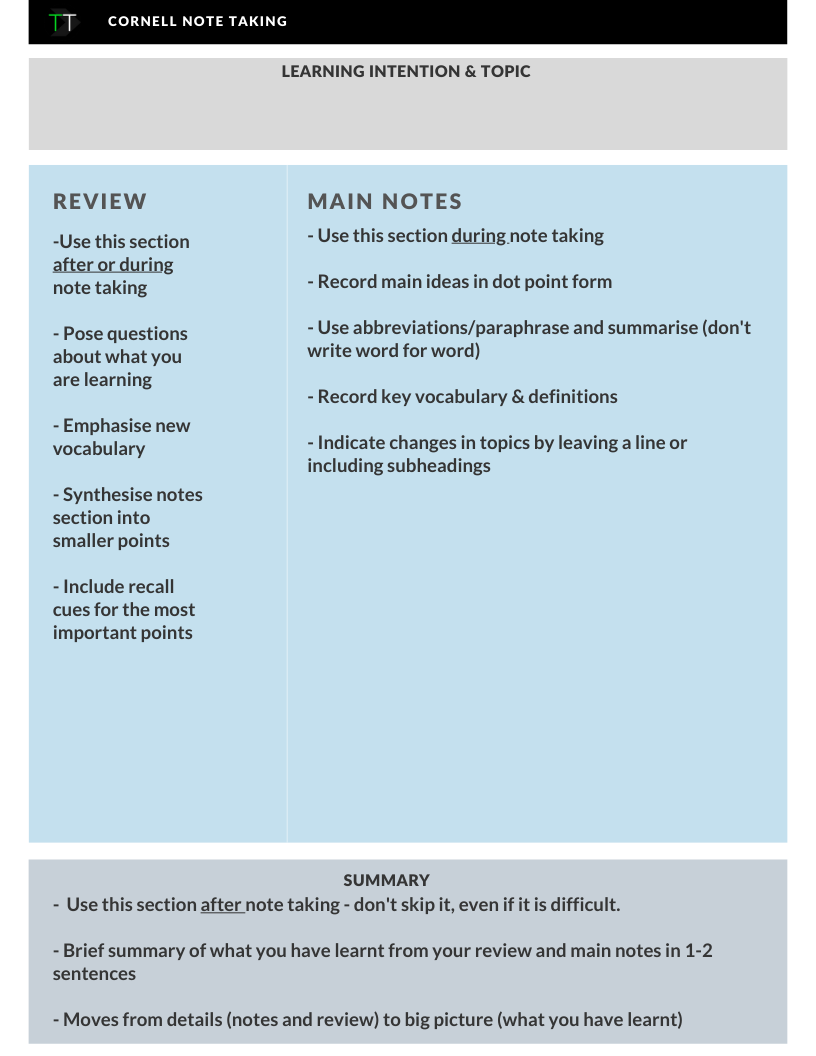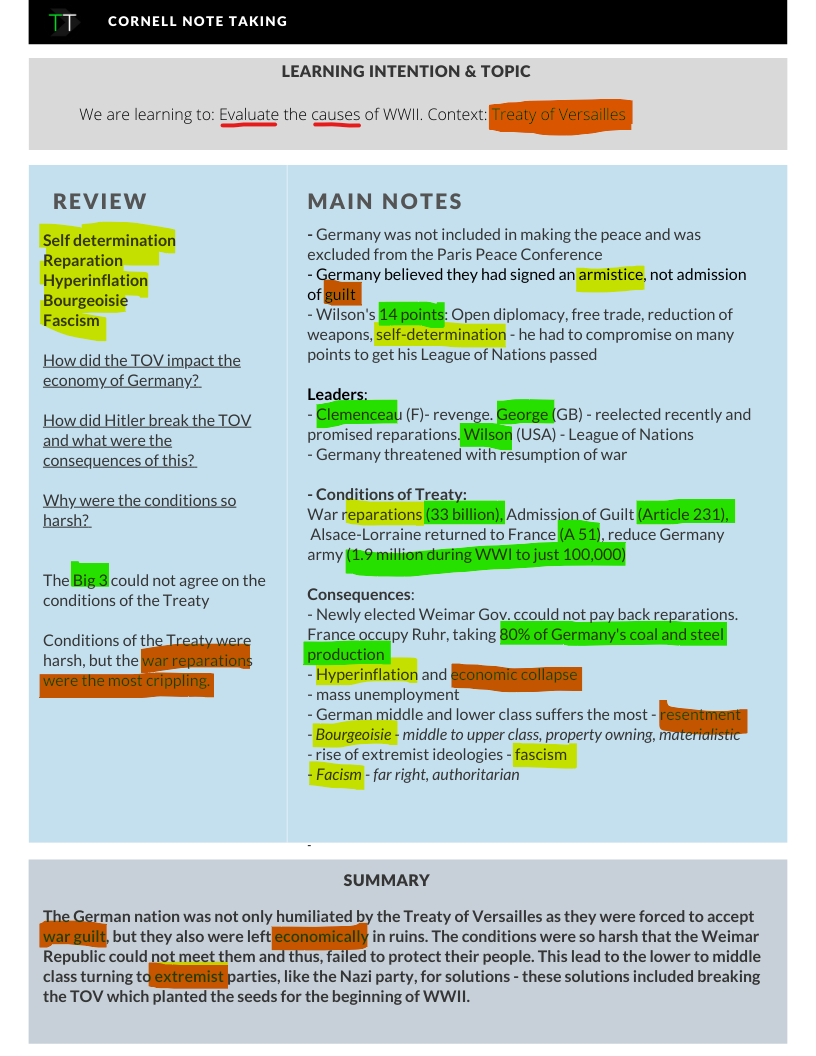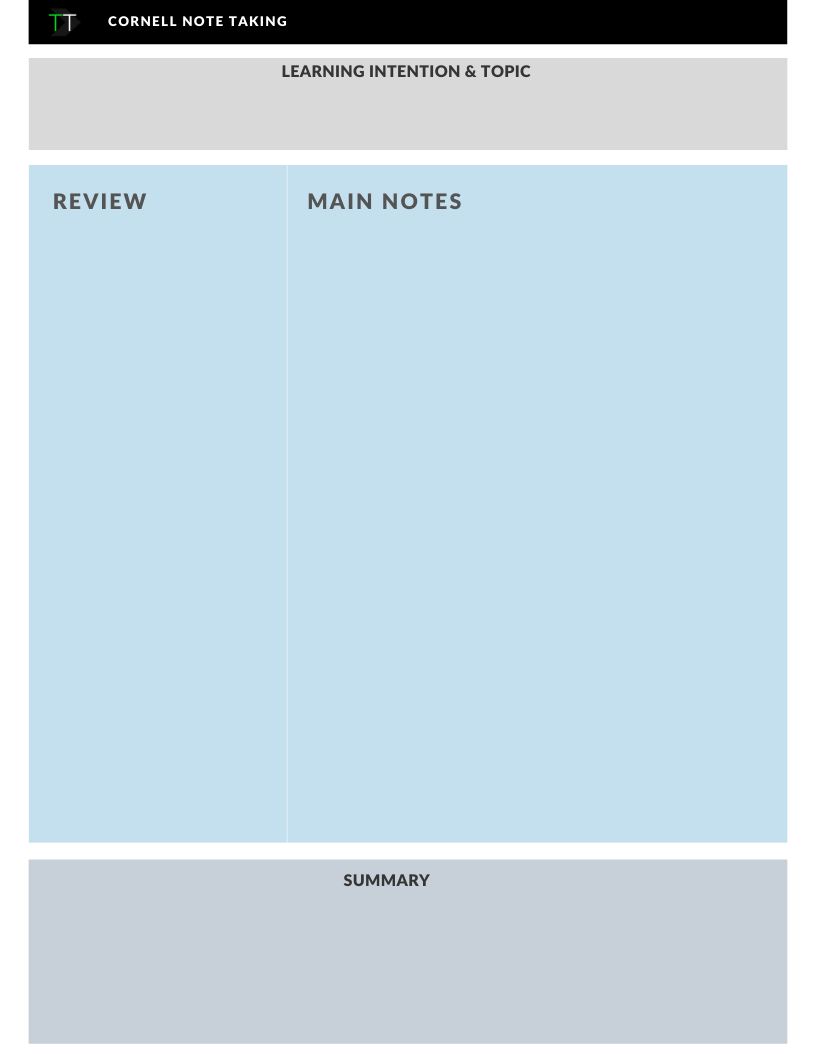Hitting the right notes
“Don’t go to the next slide yet, I haven’t finished writing everything down!”
This phrase (perhaps not always delivered as politely) is all too common in our classrooms, and it emphasises an important skill that our students may be lacking - they don’t know how to take notes. Copying script down verbatim from a PowerPoint, or board notes, does not result in the best learning; however, we can’t expect our students to do it differently if we haven’t taken the time to learn the skill with them. Explicitly teaching note taking helps our students to process content more purposefully.
Cornell note taking
I encourage my students to take notes using the Cornell approach. This is a system for taking, organising and reviewing notes that was devised by Prof. Walter Pauk of Cornell University in the 1950s. This form of note taking requires students to reflect on their notes throughout the recording process, rather than just jotting them down mindlessly. It forces them to categorise, determine importance, identify new vocabulary, and annotate. Encouraging students to be purposeful with their note taking saves them time later when they need to use the same notes to revise.
Click here and here to see short videos on using Cornell notes with your students.
Students use this system to record notes in class: this could be summarising a text book or reading, notes from PowerPoint presentation, class discussion, teacher instruction etc. Below I have included an instruction sheet, a sample and a blank copy that you can use. You can also download these for free here. You will see that the sample is annotated as well - in History, I encourage students to use yellow for key vocabulary, green for statistics, quotes and facts, and red for the key ideas.
I instruct students to write down both the learning intention and the topic in the first box (see above). As we have class discussions, read notes, watch documentaries, complete board notes or go through presentations, students record information using dot points in the main notes section. In History, this requires paying particular attention to key facts and statistics, though the content focus will differ. As they are recording their main notes, they keep track of new vocabulary, ask clarifying questions, and record key ideas in the review section. The summary section involves them processing all the information and writing one or two sentences to sum up the most important points of the day in relation to the learning intention. As one of the video states, most students will want to skip this part because it is the most difficult - it requires them to make sense of the information recorded in the context of their learning.
Annotation
As well as teaching students how to record notes, it is also important share annotation skills with them. I always try to model this with my students, using think aloud techniques to explain why I am annotating certain parts of the text. The example below is taken from an English classroom where students are annotating a novel. Because it is a fiction text, students are directed to highlight different themes and record inferences as they read.
For non fiction texts or notes, the skills remain the same (colour coding, summarising points), however the focus would be different. For example, in History, students colour code all facts and statistics in one colour, vocabulary in another colour, and key ideas in a third colour (see Cornell notes sample above). This colour coding is consistent throughout the whole year, so it is easy for them to review their notes and recall the most important information.
It is useful to give students an annotation key, like this one that you can adapt here - this may differ depending on the text type or subject area. As students become more advanced with annotation, they will likely develop their own approach, however we need to give them the training wheels so that they can take them off after.
Post it notes
What an invention! Post it notes/sticky notes make life so simple, and they are a great resource in the classroom too as they are so versatile. Here are some of the ways that we use them to help our students take notes:
Entrance tickets: As students enter the classroom, they record on their post-it the most important thing they learnt in the last lesson. This is a great way to connect to prior learning, whilst also requiring them to summarise a key idea, point or skill.
Question prompt: As you are instructing students, they can write down any questions that they have on a post it note. Collect them, stick them on the board and read out the question. See if any students can respond with the correct answer before you do. Keep them up there to refer back to in future lessons.
Exit ticket: Similar to the entrance ticket, however they complete this at the end of the lesson. They can either stick it in their work books immediately, or you could collect them to redistribute next lesson (at random, or back to the individual) to recap what was learnt.
The weeks end: At the end of the week or topic, students summarise something new that they learnt in the subject. Stick them on the wall for keep referring back to the following week/topic.
How do you use post-it notes to support note taking in your classroom? We’d love to hear from you. Please comment below if you have any other strategies to share.





